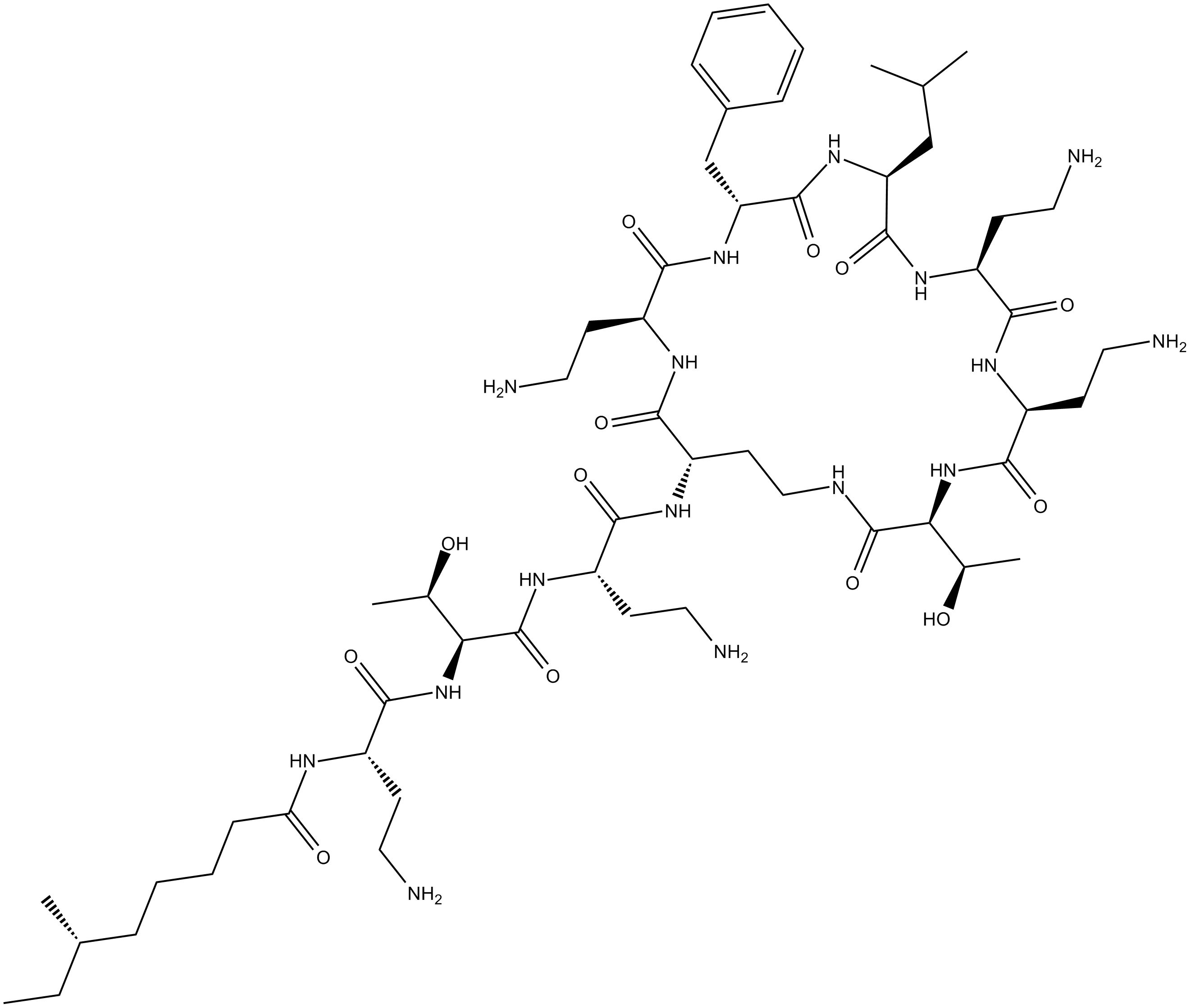Polymyxin B1 |
| Catalog No.GC11160 |
bind and kill Gram-negative bacteria
Products are for research use only. Not for human use. We do not sell to patients.

Cas No.: 4135/11/9
Sample solution is provided at 25 µL, 10mM.
Polymyxin B1 can bind and kill Gram-negative bacteria.
In view of the emergence of multidrug resistance among Gram-negative bacteria, polymyxin B has emerged as one of the therapeutic agents of last resort.
In vitro: Previous study reported the first molecular dynamics simulation investigation of the interaction of polymyxin B1 with complex models of membranes of E. coli. The results of >16 microseconds of simulation predicted that polymyxin B1 was probably to interact with the membranes via distinct mechanisms. Polymyxin B1 aggregated in the lipopolysaccharide headgroup region of the outer membrane with limited tendency for insertion within the lipid A tails. Whereas, polymyxin B1 readily insert into the inner membrane core, and the concomitant increased hydration might be responsible for bilayer destabilization and antimicrobial function [1].
In vivo: The PK parameters of the major components including polymyxin B1 from Polymyxin B did not appear to be significantly different. Less than 1% of the dose was recovered unchanged in urine collected over 48 h. Therapeutic drug concentrations maintained in kidney tissue at 48 h. The post-renal insufficiency to pre-renal insufficiency ratio of the area under the serum concentration-time curve from time zero to infinity was 1.33. Polymyxin B components seemed to have similar pharmacokinetics. Polymyxin B preferentially persisted in kidneys, suggesting a selective uptake process in renal cells [2].
Clinical trial: Treatment of patients with PMB1 has been shown to have adverse side effects on the renal and nervous system, and thus clinical use of PMB1 has been limited to topical treatment and “last resort” therapy of patients infected with multidrug-resistant bacteria or with chronic conditions who suffer from recurring respiratory infections [1].
References:
[1] Nils A. Berglund, Thomas J. Piggot, Damien Jefferies, Richard B. Sessions, Peter J. Bond, Syma Khalid. Interaction of the Antimicrobial Peptide Polymyxin B1 with Both Membranes of E. coli: A Molecular Dynamics Study. PLoS Comput Biol. 2015 Apr; 11(4): e1004180.
[2] Kamilia Abdelraouf, Jie He, Kimberly R. Ledesma, Ming Hu, and Vincent H. Tam. Pharmacokinetics and Renal Disposition of Polymyxin B in an Animal Model. Antimicrob Agents Chemother. 2012 Nov; 56(11): 5724–5727.
Average Rating: 5 (Based on Reviews and 32 reference(s) in Google Scholar.)
GLPBIO products are for RESEARCH USE ONLY. Please make sure your review or question is research based.
Required fields are marked with *




















